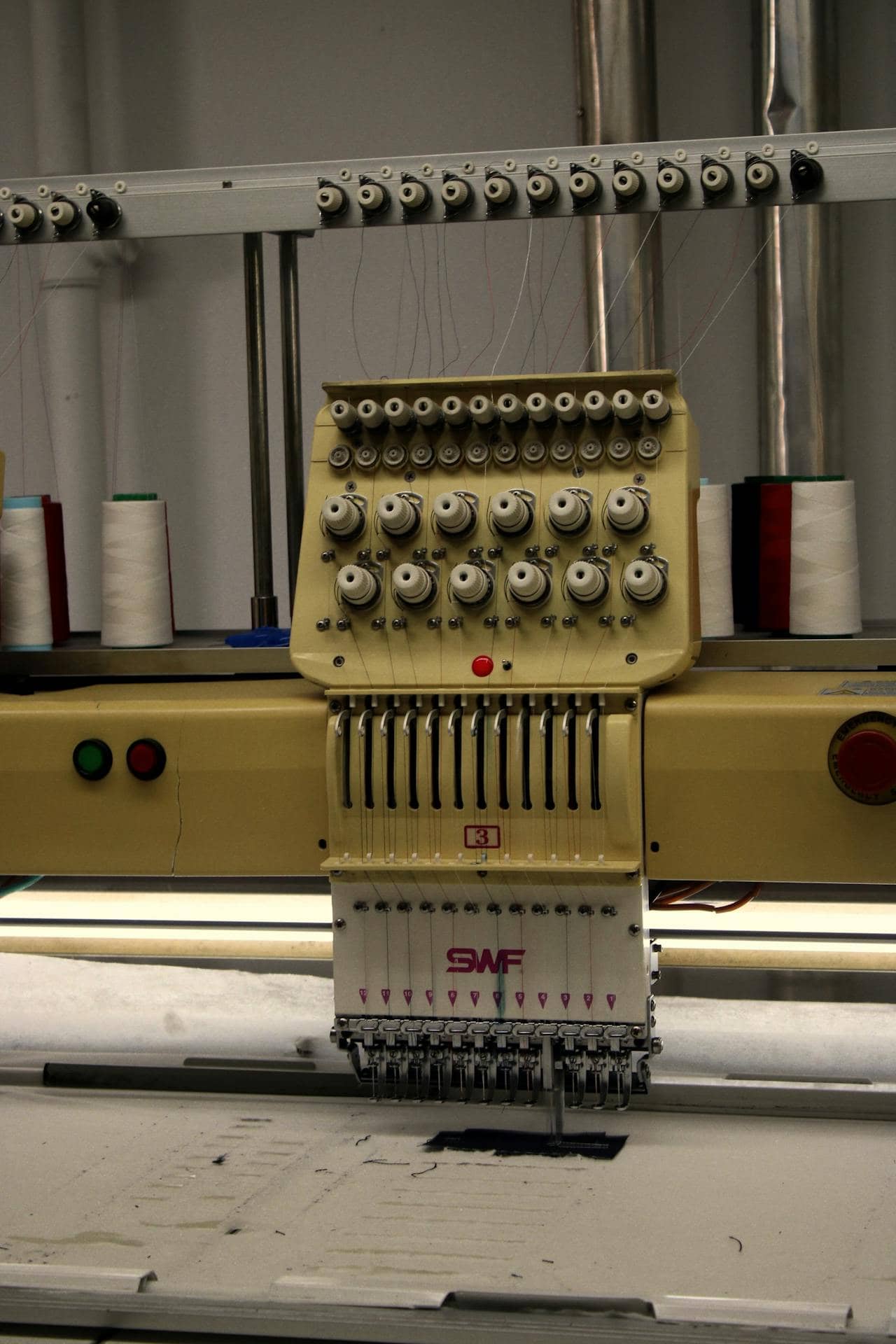The 7 technological innovations in industrial embroidery that you need to know about
The industrial embroidery industry is experiencing an unprecedented transformation thanks to new technologies. These innovations not only increase efficiency and accuracy, but also sustainability and creativity. In this article, we will explore the 10 technological innovations that are redefining industrial embroidery and that every industry professional should know about.

1. Automatic embroidery machines: efficiency and precision
Automatic embroidery machines represent a major innovation in the industry. These machines offer unparalleled speed and accuracy, significantly reducing production time. With automated systems, large volumes of work can be handled with minimal human supervision, ensuring consistent quality and reduced errors. In addition, automation makes it easy to customize each individual embroidery design, responding quickly to customer requests.
2. 3D design software for embroidery: extraordinary creations
The introduction of 3D design software has revolutionized the way embroideries are created and visualized. These tools make it possible to design complex embroidery designs intuitively, offering a three-dimensional visualization of the final product. With these technologies, designers can experiment with new styles and techniques, enhancing the creativity and precision of their creations. 3D design software has become indispensable for those who wish to offer high-quality, innovative products.
3. Laser embroidery: perfect details and speed
Laser embroidery is an innovative technology that offers unprecedented precision and speed. Using laser beams, incredibly precise and intricate details can be created on fabrics. This technique eliminates the need for needles and threads, thus reducing production time and increasing the durability of embroidery. Laser processing is especially useful for materials that are delicate or difficult to work with traditional techniques, offering superior quality and a unique appearance.
4. RFID technology for monitoring embroidery processes
Radio Frequency Identification (RFID) technology is revolutionizing the tracking and management of embroidery processes. Through the use of RFID tags, each stage of production can be tracked in real time, ensuring efficient resource management and waste reduction. This technology makes it possible to monitor the progress of work, optimize delivery times and improve transparency in the production chain. The implementation of RFID in industrial embroidery ensures greater operational efficiency and superior quality control.
5. Innovations in embroidery threads: new generation materials
Embroidery threads are undergoing a transformation thanks to new high-tech materials. Threads made of recycled polyester, advanced synthetic fibers, and biodegradable materials are becoming increasingly popular. These new materials not only offer greater strength and durability, but are also more environmentally sustainable. Innovations in embroidery threads make it possible to create high-quality products that meet the needs of an increasingly sustainability-conscious market.
6. Sustainable embroidery: eco-friendly technologie
The issue of sustainability has also become central to the industrial embroidery industry. Eco-friendly technologies, such as the use of renewable energy, low-impact processes and recycled materials, are transforming the way embroidery is produced. Companies are adopting sustainable practices to reduce their environmental impact and meet the demands of an increasingly conscious market. Sustainable embroidery not only improves corporate image, but also helps preserve the environment for future generations.
7. Automated cutting and sewing systems: perfect union
Automated cutting and sewing systems are revolutionizing the embroidery industry, offering unprecedented precision and speed. These systems use advanced technologies to cut and sew fabrics with pinpoint accuracy, ensuring superior quality and reduced waste. Automation of cutting and sewing processes allows complex projects to be handled with ease, improving efficiency and productivity. These innovations are making industrial embroidery more competitive and cutting-edge.
Conclusion
Technological innovations are transforming industrial embroidery, offering new opportunities to improve efficiency, quality and sustainability. From automated machines to advanced cutting and stitching systems, these technologies are redefining the way embroidery is produced. Adopting these innovations is key to remaining competitive and meeting the needs of an ever-changing market. Investing in new technologies is the key to success in the industrial embroidery industry.